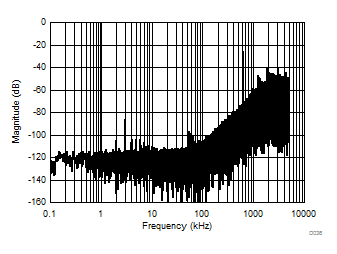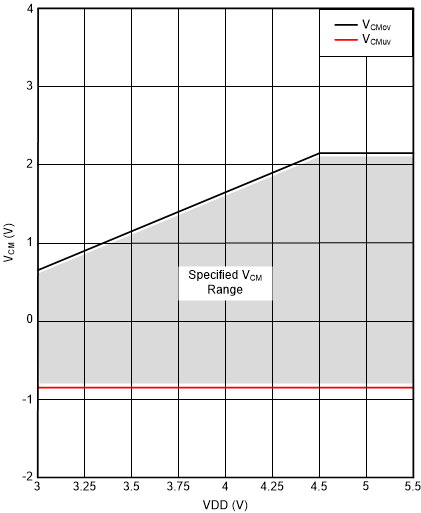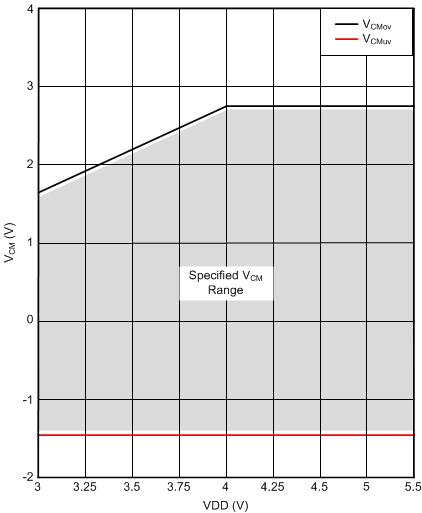SBAS941A May 2019 – November 2019 AMC1035-Q1
PRODUCTION DATA.
7.3.1 Analog Input
The AMC1035-Q1 incorporates front-end circuitry that contains a buffered sampling stage, followed by a ΔΣ modulator. To support a bipolar input range, the device uses a charge pump that allows single-supply operation to simplify the overall system design and minimize the circuit cost. For reduced offset and offset drift, the input buffer is chopper-stabilized with the switching frequency set at fCLKIN / 32. Figure 37 shows the spur created by the switching frequency.

| sinc3 filter, OSR = 2, fCLKIN = 20 MHz, fIN = 1 kHz |
The linearity and noise performance of the device are ensured only when the differential analog input voltage remains within the specified linear full-scale range (FSR), that is ±1 V, and within the specified input common-mode range.
Figure 38 shows the specified common-mode input voltage that applies for the full-scale input voltage range as specified in this document along with the corresponding common-mode undervoltage and overvoltage threshold levels.
If smaller input signals are used, the operational common-mode input voltage range widens. Figure 39 shows the common-mode input voltage that applies with no differential input signal; that is, when the voltage applied on AINP is equal to the voltage applied on AINN. The common-mode input voltage range scales with the actual differential input voltage between this range and the range in Figure 38.

Full-Scale Differential Input Signal of ±1.25 V

Zero Differential Input Signal